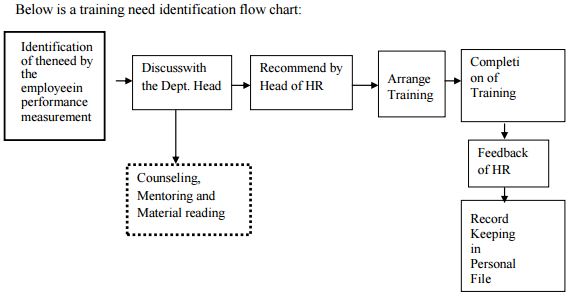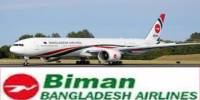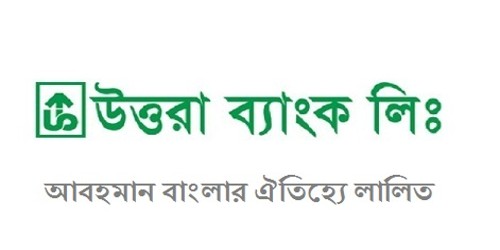Human Resource Practice at Partex Star Group
Partex Star Group is among the large Bangladesh private sector manufacturing and service based enterprises, owning and operating over twenty units giving value for money to all customers. The group started modestly in 1959 in tobacco trading and with prudent entrepreneurship of our Founder Chairman Mr. M.A. Hashem. Today we have a stake in tobacco, food, water, soft drinks, steel container, edible oil, wooden board, furniture, cotton yarn and the IT sector. After Bangladesh was established our Chairman set up M/S Hashem Corporation (Pvt.) Ltd. in Chittagong city meeting the large demand of food and materials needed for sustaining the needs of a new nation through imports. From importing to import substitution was the next logical step and the stepping stone into the manufacturing sector, which has matured to the multimillion dollar diverse investment of the Partex Star Group today. A dedicated work force and committed board members led by our Chairman and backed by a market oriented corporate strategy has been the cornerstone of our success.
Today the group has over twenty family owned private limited companies with a sizable turnover. Ours is a dynamic organization always exploring new ideas and avenues to expand and grow further.
History of the Organization
Partex Group started its journey in 1959 with the torchbearer M.A Hashem, founder chairman of the group. M.A Hashem, the living legend steered the group with such incomparable dynamics and skills, that the group attained prolific growth over a period of 50 years conglomerating 60 companies; most of which are diverse manufacturing units.
The enormous growth and fulfillment of anticipated success caused eventually a natural exodus from patrimonial management system while using the Partex as a springboard that has been held in high respect both at home and abroad for last 50 years for our adherence to values, quality products and business ethics.
With the passage of time and advent of business, the pioneering spirit of Partex has been showcased by family generation comprising Mr. Aziz Al-Kaiser, Mr. Aziz Al-Mahmood, Mr. Aziz Al-Masud, Mr. Showkat Aziz Russell & Mr. Rubel Aziz.
Significantly enough, Partex Star Group an offshoot of Partex Group steering business successfully with Mrs. Sultana Hashem at Chairperson and Mr Aziz Al Kaiser as Vice Chairman. Partex Star Group consists of 17 concerns. In 2000-2001 its targeting turnover is Tk. 8,000 million and estimated growth rate 15% per annum. Net worth at current market price is Tk. 7,500 Million. Over 350 distributors around the nation are engaged in distributing the products and services. There are over 45,000 outlets where products are marketed. Partex’s movement is many-fold. It extends its network in various sectors extended from milk to steel products.
As a well-known conglomerate Partex Star Group always try to ensure its product quality as well as customer satisfaction. Currently it has around 1400 employees. All those employees are working sincerely for increasing company profit as well as welfare. Partex Star Group also motivates their employees using several incentives. The major milestones Partex Star Group histories can be summarized as below:
In 1959 PARTEX group was established.
- In 1962 PARTEX group exposed itself nationally.
- In 1991 Danish Condensed Milk started operation.
- In 1997 Dhakacom (ISP) was formed.
- In 1997 Royal Crown (RC) International Company was included in Bangladesh under Partex .
- In 2004 PARTEX Plastics Ltd. began its commercial production.
Objective of the Study
A decrease in the magnitude of traditional sources of competitive success has led to the increased significance of human resources as part of an organization’s tangible and intangible resources having the potential for continuous organizational success (Barney, 1986, 1991, 1995; Von Glinow, 1993; Lado and Wilson, 1994). The new model of human relations views management as the primary performer in the employment relationship and relates to HRMP as “good things”.
The universalistic perspective has been proposed as a key approach in human resource management literature, and as other perspectives, it plays a fundamental role in explaining different levels of organizational performance. The universalistic perspective asserts that there is a simple direct relationship between several HRMP and organizational performance (Delery and Doty, 1996). As a result, a universal human resource management practice would directly influence organizational performance, remaining all other things constant.
According to the universalistic perspective, organizations from different sectors, across industries, and through different time periods should use a series of select human resource management practices (HRMP). The main purpose of this paper is to investigate whether there is any difference in the relationship between compensation, participation, training, and selective hiring with the organizational performance across time. Therefore given these observations, the various HRM practices in which HRM might play strategic roles as observed from the aforementioned literatures include training, employee participation, and selection. In consequent, for the purpose of this study, the above-mentioned HRMP or tasks will form the basis of the hypotheses and the questionnaire.
The main purpose of this study is to evaluate the impact of human resource management practices on organizational performance in Partex Star Group. In order to meet this objective, the following objectives taken up under our consideration.
- To find out the impact of human resource management practices on organizational performance.
- To identify the human resource practices that contribute most to the organizational performance.
- To increase awareness in organizations regarding effective human resource activities.
- To propose useful direction for future researches.
- To offer some measures in order to enhance the organizational performance of the selected conglomerate in Bangladesh.
Partex Star Group Business Domains
Star Particle Board Mills Ltd.
Star Particle Board Mills Ltd. produces particle boards, veneered boards, cabinet boards (timber framed), vinyl boards and plywood in various thickness, size and densities. All items are produced within the group to guarantee durability and performance. In addition to particle boards, Star Particle Board Mills Ltd. Produces “Partex” brand doors of several types like internal flash doors for bathroom use, cabinet doors, honey combed doors etc. Partex Board is basically a substitute of sawn and sized timber and therefore, prevents deforestation, thus strengthening the ecological balance. Now Partex produces Woodex from hard wood chips and offers three types of wooded boards in Plain, Veneered and Vinyl boards.
Danish Condensed Milk Bangladesh Ltd
It covers two major production ranges, “Danish” Sweetened Condensed Milk and “Silver Cross” Full Cream Sweetened Condensed Milk, both in tin containers of 397 grams. The quality of the products is maintained stringently at all levels under the technical assistance of Australian Dairy Corporation. The entire requirement of condensed milk of Bangladesh is being created through a nationwide distribution network system formed by company appointed distributors.
Partex Furniture Industries Limited
PARTEX holds 29% of the total furniture market in Bangladesh whereas Otobi has 34%, Navana has 22% and others have 15% market share. Most of the furniture industries have their own showroom and dealer’s showroom. The total number of dealer and agent outlets of Partex
Furniture Industries Ltd in Bangladesh is over 80 and showroom is 14. It has 9 types of product range according to the market segmentation like home care, corporate care, Industrial Care, Medi Care, Edu Care, Leisure Care, Child Care, Eco Care, and Wedding Care.
Danish Foods Limited
It produces highest quality fruit drinks under the brand name Danish Fruit Juice. Bangladeshi customers have welcomed the mango, fruit cocktail and orange flavored drink, hygienically packed in 250ml aseptic packs. Every age group can enjoy this drink, especially when served chilled in our hot summers. Some other products of Danish Foods are Danish biscuit, Danish Spice, Danish Muri, DanishSemai and so on.
Partex Builders Limited
Partex Builders Limited is a venture to meet nation’s ever-increasing demand for housing. To keep pace with demand, it is necessary to be in touch with the latest innovations and ideas in this highly specialized and vital arena of the nation’s economy. The upward demand in this sector and the need for further investments has led the Partex Group to participate in this venture Partex is stepping in to this sector with a group of talented and creative personnel with vision and imagination.
Partex Laminates Ltd.
Partex Melamine Faced Chip Boards are produced in completely NEW plant using most modern German State-of-the Art technology. Melamine Faces are mechanically pasted on both sides of the Board.
Partex Agro Limited
Partex Agro Ltd. is a concern of Partex Star Group. The division concentrates on research & development, production, processing and marketing of hybrid seeds. Beside this the company deals with pesticides and fertilizer. The concern has been driven by continuous innovation in every field of activity like research, production, processing and marketing. Partex Agro Ltd. launches its activity in early 2009 with an objective of producing quality seeds and other agricultural inputs and makes them available to farmers at competitive prices.
Rubel Steel Mills Ltd.
It is equipped with the very latest automatic container making technology. It produces drums specially designed and made as bulk container suitable for packing refined edible oil like soybean, palm, mustard and coconut oil. These are also suitable for glycerin and oils like petroleum products and lubricating oil.
Corvee Maritime Co. Ltd.
CMCL is now well-equipped with a modern oil tanker of 1000 M.T. capacity. It is constantly updating its service. The vessel primarily carries, CDSO, fat products and other oil products.
Ferrotechnic Ltd.
It produces substitutes of wood products for construction and fixtures. The group also produces high quality furniture from Partex board products. The company has earned a reputation for its high standard and superior finishing in all of its products in the field of exclusive furniture, décor and design.
Danish Milk Bangladesh Ltd
It was launched with the aim of marketing high quality full cream milk powder throughout the nation. The company markets “Danish” brand spray dried full cream milk powder both in 500 grams and 1000 grams sachet packs, enriched with vitamin A and D.
SWOT Analysis – PSG vs. MARKET
The SWOT analysis comprises of the Organization’s internal strength and weakness and external opportunities and threats. SWOT analysis gives an organization an insight of what they can do in future and how they can compete with their existing competitors. This tool is very important to identify the current position of the organization relative to others, who are playing in the same field and also used in the strategic analysis of the organization.
Strengths
– Dominant market position in chosen markets
– Customer franchise
– Strong regional focus
– Product diversity
– Experienced and efficient management team.
– Better infrastructure facilities.
– Company reputation and goodwill.
– Sound profitability and growth with good internal capital generation.
– Larger corporate client base.
Weaknesses
– Limited headroom for growth in top names
– SQ: not at par with customer expectation
– Lack of up-country reach
– Perceived lack of flexibility vis-a-vis local banks
– Turnover and long term people issues
– Moderate market share.
– Lack of full-scale automation.
Opportunities
– Untapped Middle Market
– Acquisition of Corporate clients
– Economic growth of Bangladesh.
– Country wide network
– Scope of market penetration through diversified products.
– Government’s policy of encouraging export.
– Regulatory environment favoring privet sector development.
– Increasing purchasing power of people.
– Increasing trend in international business.
Threats
– Aggressive competition from Int. & local conglomerates.
– Political volatility & regulatory impediments
– Loss of people to competition
– Increasing competition for market share in the industry.
– Frequent changes of industrial rules by the Government.
– National and global political unrest.
Human Resources Policy
The Partex Star Group recognizes that the employees are the most important resources in the organization. Therefore, the employees, who serve in different Divisions / Regions / Locations, are united in their common endeavor to contributing to the strength and growth of the Organization.
The Partex Star Group believes in providing uniformity throughout the Organization and based on that belief the objectives of the Organization’s Human Resources Policies are:
- Attract quality employees with good caliber;
- Allocate human resources to achieve optimum productivity and efficiency.
- Retain and motivate all employees with a view to maximizing their contribution with enhanced efficiency and productivity;
- Offer fair, equitable and competitive pay and benefits.
- Encourage employees to well-equip themselves for the present job and future development of Partex Star Group.
- Reward is based on merit. Give priority to high performance to take up more responsible positions.
- Promote two-way communications between employees and the management as a means of building mutual understanding and trust.
- Provide a working environment in which employees at all levels and in conformity to their positions are treated fairly and consistently wherever they are required to work and thus developing and maintaining an effective workforce;
- Give top priority to work place safety to protect human health to enable employees to deliver their best performance.
- Develop employees to assume position of authority and responsibility in the Organization with a thorough knowledge and commitment to the Organization’s objectives.
- Support protection of human rights in employment, as guided by relevant internationally accepted principles such as those in the Universal Declaration of Human Rights.
Human Resource Department Functions
Human resource management (HRM) is a process consisting of the acquisition, development, motivation and maintenance of human resources. It is concerned with the people dimension in management. Since every organization is made up of people in order to achieve the organizational objective it is essential to:
- Acquire their service
- Develop their service
- Motivate them to higher levels of performance
- Ensure continuity of maintaining their commitment to the organization.
The above four functions may be described as getting people, preparing them, activating them and keeping them.
Acquisition Function:
The acquisition function begins with planning relative to human resources requirement by estimating demand and supply of labor. It also includes the recruitment, selection and socialization of employees.
Development Function:
The development functions can be viewed from the following three dimensions:
- Employees training: It emphasizes skill development and the changing of attitudes among workers.
- Management Development: It primarily concerns with knowledge acquisition and the enhancement of an executives conceptual abilities.
- Carrier Development: It is the continued effort to match long-term individual and organizational needs.
Motivation Functions:
- It recognizes that individuals are unique and that motivation techniques must reflect the needs of each individual.
- It reviews the employee’s alienation, job satisfaction, performance appraisal, behavioral and structural techniques for stimulating workers performance, the importance of linking rewards to performance, compensation and benefit administrations and how to handle problems.
Maintenance Function:
It is concerned with providing those working conditions that employees believe are necessary in order to maintain their commitment to the organization.
Human Resource Area
The following are the Human resources areas that have impacts on the human resources outputs that are classified as quality of life, productivity and readiness for changes:
- Human resource planning – Determining the organization, major Human Resource needs, strategies and philosophies.
- Organization / Job design – Defining how tasks, authority and systems will be organized and integrated across organization units and in individual jobs.
- Selection and staffing – Matching people and their career needs and capabilities with jobs and career paths.
- Training and development – Identifying, assessing and helping develop the key competencies which enables individual to perform current or future jobs.
- Organization Development – Assuring healthy inter and intra unit relationship and helping group initiate and manage change.
- Compensation / Benefits – Assuring compensation and benefits fairness and consistency.
- Employees Assistance – Providing personal problem solving, counseling to individual or employees.
- Union / Labor relation – Assuring healthy union / organization relationship.
- Personnel Research and Information System – Assuring a personnel information base.
Output of Human Resource Area
(1) Quality of Work life: The premise of quality of work life is having a work environment where an employee’s activities become more important. This means implementing procedures or policies that make the workless routine and more rewarding for the employee include autonomy, recognition, belonging, progress and development and external rewards.
(2) Productivity: It is the amount of work that is being produced in term of how much and how well. Major components constituting productivity factor are: capital investment, innovation, learning, and motivation.
(3) Readiness for change: Change is a fact of life in both private and work life. At the work site, one must be aware that changes will occur. This may be either getting a new boss or by automating many of the manual operation. Organization perspective demands that change must take place to remain competitive. It is employers responsibility to communicate the forthcoming changes to their employees, identify why the changes are necessary and lend their total support ensuring that the change take place.
Human Resource Plan and Control
Human resource Plan Definition
Human resource planning is the process by which an organization ensures that it has the right number and kinds of people, at the right places, at the right time, capable of effectively and efficiently completing those tasks that will help the organization to achieve its overall objectives. Human resource planning ultimately translates the organization’s objectives and plans into goals, into the number and type of employees needed to meet those objectives. It is an integral part of the organization overall strategy.
Purposes
The aims of manpower planning of Partex Star Group are:
- To ensure that Partex Star Group acquires and retains the optimum number of employees with the required skills, expertise and competence;
- To exercise effective control of staffing and the associated cost; and
- To assist in optimum resources allocation so that potential manpower surplus or shortage can be anticipated and alleviated as much as possible.
Planning
Heads of Division/Department are required to conduct a thorough review of the operations, structure and manpower of their Divisions/Departments each year, and furnish recommendations of manpower plan for the following financial year to the Human Resources Department. The • Human Resources Department is responsible for reviewing the recommendations and compiling a corporate manpower plan for the financial year. The manpower plan sets out the number of posts by level and by Division /Department.
Planning Process
- Human resource planning begins by developing profile of the current status of human resources. This is an internal analysis that includes an inventory of employees and skills already available within the organization and a comprehensive job analysis.
- Analyze jobs providing information about job currently being done, a critical input for job description, job specification and job evaluation.
- Review the organizations overall objectives and revenue projection.
- Translate revenue projection into forecast of demand for human resources.
- Assess and forecast internal and external supply source.
- Matching the forecasts of future demand and supply highlighting shortage, and over staff position.
Procedures
i HR issues organization change request form to each Department Head, as part of the business planning exercise.
ii. Department Heads return the completed forms to HR Department.
iii. Based on inputs received, short term and long term HR objectives are set in line with business plan. .
iv. Head of HR invites other departments head in a HR Planning review workshop to:
- Discuss and understand different functional and organizational needs
- Share and agree upon the assumptions that underpin the planning premises
- Achieve consensus on the data collection method and source of data to be obtained!
- Head of HR facilitates the session and prepares proceedings.
v. HR Department Prepares Plan with detailed schedule and estimated budget.
- HR Department prepares the draft HR Plan.
- Head of HR reviews the draft plan and budget and provides his feedback.
- Head of Finance checks the draft plan and budget and provides input on impact of the plan and budget on bottom line and productivity.
- HR Planning section makes necessary amendment based on input received from Head of HR & Finance.
vi. Head of HR places the HR Plan and Budget to the MD / CEO for approval.
vii. MD / CEO reviews and approves or revises the annual HR Plan and Budget.
viii. Upon review and approval of the plan, Head of HR informs each Function / Department Head, initiates the program and facilitates the department heads to institute the plan.
ix. Head of HR conducts periodic review / audit of HR planning system by measuring the determined objectives and actual achievements.
Recruitment & Selection Policy
Policy
To recruit and select competent human resources based on approved HR plan for the company to attain its business objectives.
Purpose
- To acquire, in cost effective manner, the optimum number of high quality employees for operation and development.
- To appoint the most appropriate persons for the position.
- To draw potential candidates from a wide pool and equal opportunities are ensured for all candidates.
- To ensure transparency and fairness throughout the requirement process and maximize the diversity of applicants.
Scope
- This policy supersedes the previous policies (if any) in this regard.
- This policy is applicable to all employees from job grade M-01 to M -14 of the company.
- Employees appointed on contract or otherwise are not under the purview of this policy.
Guiding Principles
- Candidates are selected on the basis of required job competencies, experience and future potentials.
- Preference will be given to internal movement over external recruitment for candidates with equivalent competencies. For this purpose, the direct line manager should check first whether the role requirements can be met by rearranging current roles & responsibilities.
- Company also welcomes external candidates who will in turn bring new ideas/ innovations in the company.
- Except for positions requiring a very high level of functional and/ or leadership expertise, all selection will be made from local candidates.
- In case of hiring mid or senior level positions, the company may consider taking services from consultancy firms.
- To ensure consistency across the group, the primary responsibility of hiring of employees from- Job grade M-01 to M-14 of Management Level is with corporate HR. But to meet up the regular requirement at plant, job grade M-01 to M-5 of Non-Management Level can be directly recruited from plant HR & Admin Functions. Also the other positions recruitment process can be done by plant HR & Admin but corporate HR involvement is a must.
- All original documents (job grade M-6 to M-14) shall be maintained at corporate HR department.
Employment Conditions
- No person shall be appointed in the service of the company if he is not a citizen of Bangladesh. A foreigner may be appointed for a limited period as technical expert provided the concerned department of the Govt of Bangladesh approve the appointment.
- A candidate shall not be less than 18 years and ordinarily not more than 45 years of age at the time of appointment to the service of the company. The upper age limits may be relaxed, in special cases, by the Board of Directors.
- A declaration of age made by the applicant shall be binding on him and no revision of such declaration shall be allowed at a later date for any purpose whatsoever. The Matriculation Certificate or Secondary School Certificate shall be admitted as conclusive proof of age.
- No person shall be appointed in the service of the company unless he is declared mentally and physically fit for service by a qualified medical practitioner deputed by the company.
- No person shall be appointed in the service of the company if he has been dismissed, removed or his service have been terminated for reasons reflecting on his integrity, honesty and morality or if he has been criminally convicted by any court of law.
- Every employee shall fill in and sign staff regulation and Personnel Record forms (Form – EP/1). Letter of acceptance of appointment, doctor’s certificate, physical fitness, copies of certificates of educational / professional qualifications and other documents / papers required as per terms of appointment letter.
- Active service in the company shall commence from the working day on which an employee reports for duty at the place indicated by the appointing authority before noon, otherwise the active service shall commence from the following working day.
- Service Agreement: On entering the service of the company an employee shall execute declaration of fidelity and secrecy in the form and also general declaration in form.
- Over and above the declarations mentioned above, an employee shall enter into an agreement with the company in the form prescribed as Form – EP/1 hereto and any modification thereto made from time to time.
- ‘If retired personnel with considerable experience and good background are to be appointed in the company’s service, they may be appointed on contract basis on such terms and conditions and on such salary and allowances as may be decided by the Board of Directors. An employee on contract shall enter into an agreement with the company as may be prescribed from time to time by the company.
Selection Criteria
The following two sets of selection criteria shall be considered in the recruitment process:
Shortlist Criteria: The shortlist criteria shall focus on the factual requirements of the person specification. In shortlisting candidates for interview, the following factors shall be considered:
- academic, professional and technical qualifications;
- relevant work experience; and
- leadership and management experience. There shall be no discrimination on the grounds of age, sex, marital status, family status, sexual orientation, disability, race, nationality or religion in any circumstances. All candidates shall be assessed fairly and equally irrespective of the sources they come from.
Final Selection Criteria
The final selection criteria are applied to evaluate the evidence gathered through interviews and discussions following the initial shortlist. The final selection criteria shall focus on, inter alia, personal qualities, attributes and competencies, past performance, aspirations, potentials, communication and interpersonal skills, professional and personal integrity.
Recruitment & Selection Process
Following process to be ensured in order to complete the whole recruitment and selection process:
- Recruitment Requisition and Approval
- Job Announcement
- Interview and Assessment
- Final Selection
- Job Offer ‘
- Joining
Job Offer
When a suitable candidate is identified, the Human Resources Department will discuss with the recruiting officer and/or the Head of Division/Department, as appropriate, on the terms and conditions to be offered to the candidate. In determining the entry grade and salary of a prospective employee, the following factors will be considered:
- Academic, professional and technical qualifications and working experience;
- Job knowledge and technical know-how;
- recent earnings;
- prevailing market rate of the vacant position;
- availability of suitable candidates in the market;
- internal relativity of Partex Star Group; and
- Job grade and salary range of the vacant position.
The offer of employment shall be issued by Chief HR Officer/HR In charge for up to job grade M8 and the rest are CEO or MD2 or VC. The remuneration package will be based on approved salary structure or otherwise as recommended by CEO and approved by MD2 or VC. The date of appointment .preferably to be effective either on 01st day or 15th day of the month.
The offer letter to candidates includes the following:
a) Offered position
b) Placement
c) Date of Appointment
d) Documents for filling
Offer letter will be considered invalid if the selected employee fails to join within the stipulated time.
Employment Formalities
- Vetting of Documents
Prior to confirmation of appointment, the Human Resources Department will ensure that the candidates are lawfully employable and hold a valid Hong Kong Identity Card or other valid identity documents that are acceptable to the Immigration Department. Candidates are required to certify their qualifications and working experience by producing the original copies of their academic and professional credentials, reference letters from previous employers and other relevant documentation.
- Employment Visa
For prospective employees who require an employment visa to work in Bangladesh, the offer of appointments will be subject to their obtaining a valid employment visa from the Government of the Bangladesh. The Human Resources Department will assist in the process of visa application when necessary.
- Reference Check
With the written authorization of the new employees, Partex Star Group will conduct reference checks with their previous employer as far as practicable, immediately after they have accepted Partex Star Group offer of employment. This is to ensure that the information provided by employees in their applications is correct and .that their supervisors are alert at an early stage to any adverse comments about them. If it is impracticable to make a reference check with their latest employers, a reference check with their second latest employers will be conducted first while the reference check with the latest employers will be processed immediately after the employees have reported for duty. If an employee is found to have provided false information, misrepresented or not disclosed any material facts in his application, it shall be deemed to be sufficient grounds for Partex Star Group to terminate the employee’s service summarily, unless the employee can give a satisfactory explanation.
Reporting Duty
On their first day of employment, new recruits will usually report to the Human Resources Department to complete the engagement formalities and attend a brief company induction before they report for duty to the designated Division/Department. Heads of Division/Department should arrange for new employees’ job induction once they have reported for duty. New employees will also be invited to attend a Staff Orientation Program conducted by the Human Resources Department to help them better understand the mission, objectives and organization structure of Partex Star Group, as well as its rules and regulations, and code of conduct.
Joining
The Selected employees join at the respective department within the stipulated time. The following documents to be furnished to HR department within the stipulated time of joining to start processing of payroll.
Training and Development Policy
Purpose:
The main objective of training and development in Partex Star Group is to help develop key competencies which enable individuals to perform current or future jobs successfully. In this regard, all training and development programs organized by the Human Resources Department will be geared towards the following objectives:
- Strengthening the job skills/knowledge of employees;
- Improving operational efficiency and productivity; and or
- Developing the potential of employees for maximizing mutual benefit to individuals and Partex Star Group.
- Preparing an employee for a higher level job and enhanced responsibilities
- Preparing a person to undertake a completely different job from that with which he is familiar.
Basic policy in administering and implementing any type of training or development activity is in accordance with the strategic business objectives of Partex Star Group. The Human Resources
Department will work closely with Heads of Division/Department in assessing areas that need training and development support.
Approaches for Training Development
- The following intervention approaches are taken to develop different categories of employees:
– On the basis of needs assessment, officers at different grades are trained & developed to improve their’ Functional Skills’.
– Newly promoted supervisors, controllers & Managers are trained & developed to improve their ‘Human Skills’ along with ‘Functional Skills required for their new responsibilities.
– Asst. Managers, Managers, Senior Managers/ DGMs and GMs/ Directors are provided with development intervention to improve their leadership Qualities’ along with their ‘Human Skills’.
– Operational Heads are also provided with development intervention to improve their ‘Conceptual Skills’ along with leadership Qualities’ in order to broaden their perspectives.
– Any of the employees [Officer to Operational Heads) may be assigned -‘Special Projects’ in order to improve his ability to work in a Team’
- Training requirements of employees are identified based on the outcomes of annual Performance Management Process as well as Skills Gap Analysis exercise.
- Priority is given to in-house training to be conducted by designated Training Officers or any other fine and /or staff executive suitable to conduct training.
- The expenses incurred by an employee to attend training session/ courses/ workshops are borne by the company.
- All in-house and external training programs are documented using the training card. Every department has to follow an employee performance measurement method devised by the HRD.
This performance measurement form is filled out and signed by the supervisors and respective Department Heads. Based on these performance reviews, training needs are identified for different employees.

Recommendation
After completing the analysis of the studied variables in the context of Partex Star Group, the following issues were found for recommendation:
From the analysis, training proved to be a significant factor for organizational performance. Therefore, Partex Star Group should emphasize on their training program to a great degree. Partex Star Group should give proper formal training in different areas to their employees so that they can increase the organization’s performance through increase their individual performance by getting good training.
According to the findings, Recruitment and Selection turned out to be a very important factor for Partex Star Group. Majority of the employees believed that structured selection process of employees in different organizational aspects played a strong role in improving the organizations performance. So Partex Star Group should put more focus on it and needs to create such
recruitment policy so that to right candidates should be selected for the right position in the right time.
For improving the performance and remove the problem of Partex Star Group (PSG), some necessary steps are recommended bellow on the basis of collected data, observation, expert staffs’ opinion and my knowledge and judgment.
- Should increase the number of computers as well as printers with proper UPS facility.
- PSG must expand marketing campaign by giving more advertisement, sponsorship etc.
- To perform the activities more quickly and efficiently, PSG should hire more efficient employees in their different departments.
- The software and network system of HR department should be updated properly.
- PSG should evaluate the previous performance and the after training performance to identify the improvements.
- PSG management must change the system of appointing people by giving their reference
- They should take HR forecasting more seriously as it is the most important part of HR planning.
- To keep fair and effective recruit policy they should introduce assessment center.
- Organization should hire more human resource in HRD department because there is insufficient manpower.
- PSG needs to be more focused on CSR activities and employee retention & welfare programs.
Conclusion
To improve the organizational performance it is very important to provide formal training, compensation by which the employees can satisfy themselves, and create opportunities where every employee can participate. To an extent it is important to select the right kind of employee for increase organizational performance, but the magnitude of transparency and quality Partex
Star Group exerts in its employee selection process renders it sufficient to merely continue the current practice. Therefore, from this study Partex Star Group can get the indications on which of the issues they have to focus more to increase or improving their performance. Finally, this research will encourage further study and useful guidelines for these types of researches.
















